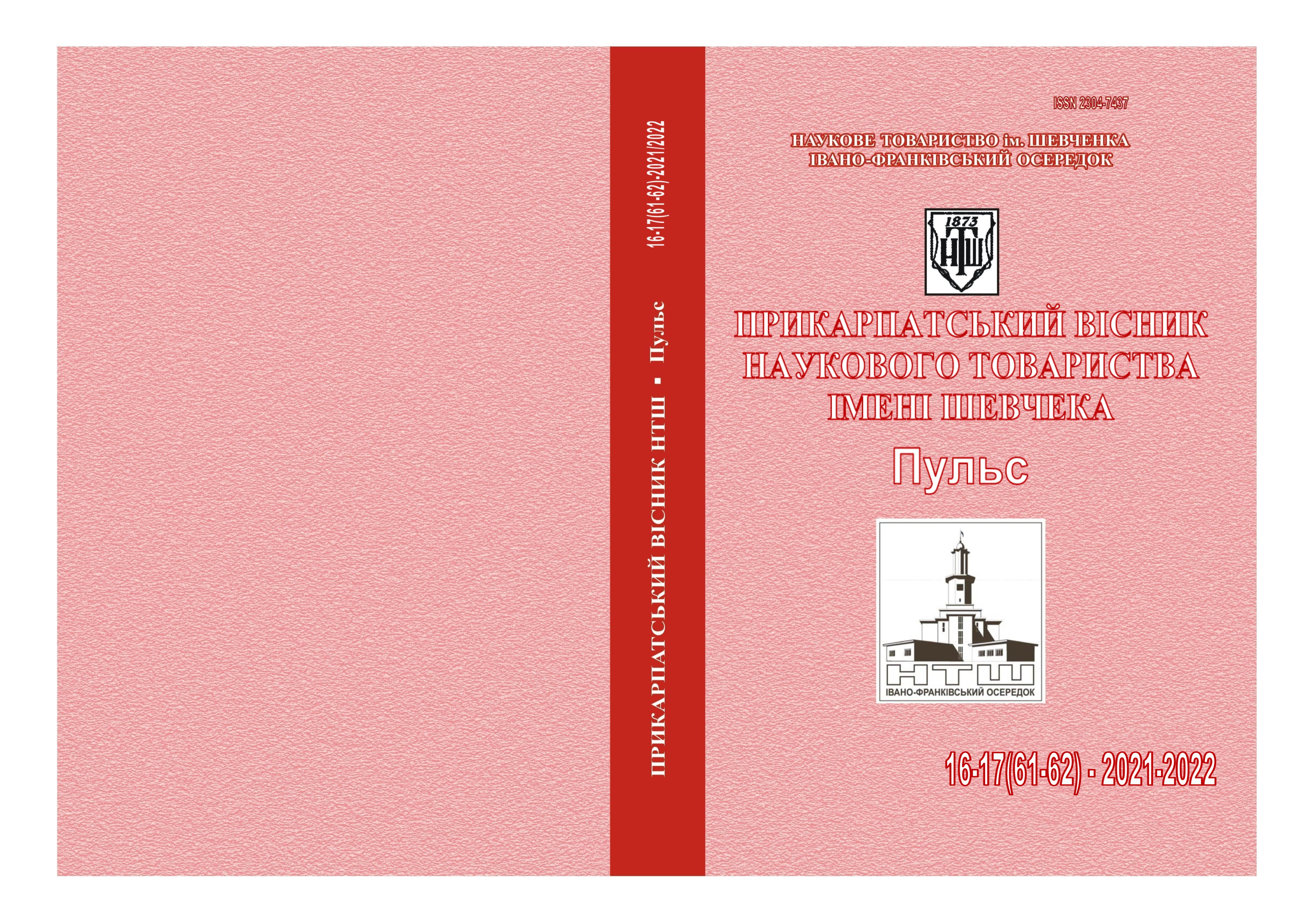FEATURES AND STRUCTURE OF THE COMPLICATIONS OF ENDOVENOUS LASER ABLATION
DOI:
https://doi.org/10.21802/2304-7437-2021-2022-16-17(61-62)-8-15Keywords:
varicose veins, endovenous laser ablation, complications.Abstract
The aim of the research work: to analyze the structure, frequency and features of complications after endovenous laser ablation in patients with varicose veins of the lower extremities. An open, prospective study was conducted, which included 208 consecutive patients with varicose veins of the lower extremities. All patients underwent endovenous laser ablation of varicose veins and investigated the structure and features of the development of postoperative complications. Pathological reflux of blood in the trank of the great saphenous vein of the lower extremity was diagnosed in 206 cases, isolated reflux in the trank of the small saphenous vein was observed in 24 (10.4 %) limbs, in 16 patients EVLA was performed simultaneously in the small and large saphenous veins). One or more adverse events were reported by 94 patients (45.2%) during the first 2 weeks after treatment, and pain was the most common symptom in the study patients, with complaints reported by 82 (39.4 %) patients with a mean value immediately after treatment). The second most common complication of endovenous laser ablation was ecchymosis, which developed in 44 (19.1% extremities). Tissue induration and hyperpigmentation along the coagulated vein were observed in 5.2% and 3.9%, respectively. Manifestations of transient paresthesia and wound infection were observed in 0.4% of cases, in 2 (0.9 %) patients after EVLA in the great saphenous vein. In the postoperative period serious adverse events developed, such as EHIT II and in 3 (1.4 %) cases asymptomatic distal deep vein thrombosis. Endovenous laser ablation is an effective method of treating varicose veins of the lower extremities with a high safety profile. Clear standardization of the procedure and postoperative monitoring will minimize the risks of postoperative complications and eliminate them in a timely manner.
References
Siribumrungwong B, Noorit P, Wilasrusmee C. A systematic review and meta-analysis of randomised controlled trials comparing endovenous ablation and surgical intervention in patients with varicose vein. Eur J Vasc En-dovasc Surg.2012;44(2):214–23.
Marsden G, Perry M, Bradbury AW, Hickey N, Kelley K, Trender H, et al. Acost-effectiveness analysis of surgery, endothermal ablation, ultra-sound-guided foam sclerotherapy and compression stockings for sympto-matic varicose veins. Eur J Vasc Endovasc Surg.2015; 50:794–801. doi: 10.1016/j.ejvs.2015.07.034.
Yamamoto T, Sakata M. Influence of fibers and wavelengths on the me-chanism of action of endo- venous laser ablation. J Vasc Surg Venous LymphatDisord2014;2(1):61–9.
Vuylsteke M, Thomis S, Mahieu P. Endovenous laser ablation of the great saphenous vein using a bare fibre vs a tulip fibre. A randomised clinical trial. Eur J Vasc Endovasc Surg.2012; 44:587–92.
Dexter D, Kabnick L, Berland T, Jacobowitz G, Lamparello P, Maldonado T. Complications of endovenous lasers. Phlebology 2012; 27 Suppl 1:40–45. DOI:10.1258/phleb.2012.012S18.
Lurie F, Passman M, Meisner M, Dalsing M, Masuda E, Welch H, Bush RL et al. CEAP classification system and reporting standard, revision 2020. Journal of Vascular Surgery: Venous and Lymphatic Disorders. 2020;doi:10.1016/j.jvsv.2019.12.075.
Nyamekye IK. A practical approach to tumescent local anaesthesia in am-bulatory endovenous thermal ablation. Phlebology. 2018; 0(0): 1-8. doi:10.1177/0268355518800191.
De Maeseneer M, Pichot O, Cavezzi A, Earnshaw J, Rij A, Lurie F, et al. Duplex Ultrasound Investigation of the Veins of the Lower Limbs after Treatment for Varicose Veins e UIP Consensus Document. Eur J VascEn-dovasc Surg (2011) 42, 89e102. doi:10. 1016/j.ejvs.2011.03.013.
Kabnick LS, Sadek M, Bjarnason H, Coleman DM, Dillavou ED, Hingo-rani AP et al. Classification and treatment of endothermal heat-induced thrombosis: Recommendations from the American Venous Forum and the Society for Vascular Surgery This Practice Guidelines document has been co-published in Phlebology. 2021 Feb;36(1):8-25. doi: 10.1177/0268355520953759.
American College of Phlebology. Practice guidelines: super-ficial venous disease. Avaliable at: http://www.phlebology.org/ member-resources/clinical-guidelines. Accessed March 1, 2019.
Wittens C, Davies AH, Bækgaard N, Broholm R, Cavezzi A, Chastanet S, et al. Editor’s choicedmanagement of chronic venous disease. Eur J Vasc Endovasc Surg 2015; 49:678-737.
Wołkowski K, Wołkowski M, Urbanek, T. Venous Thromboembolism Prophylaxis and Thrombotic Risk Stratification in the Varicose Veins Sur-gery – Prospective Observational Study. J. Clin. Med.2020, 9(12), 3970; doi.org/10.3390/jcm9123970.
Sufian S, Arnez A, Labropoulos N, Lakhanpal S. Endovenous heat-in- duced thrombosis after ablation with 1470 nm laser: Incidence, progression, and risk factors. Phlebology.2015; 30(5):325-330. http://doi.org/10.1177/0268355514526588
Cavallini A, Marcer D, Ferrari Ruffino S. Endovenous ablation of incom- petent saphenous veins with a new 1540-nanometer diode laser and ball- tipped fiber. Ann Vasc Surg. 2014; 28(3):686-694.

